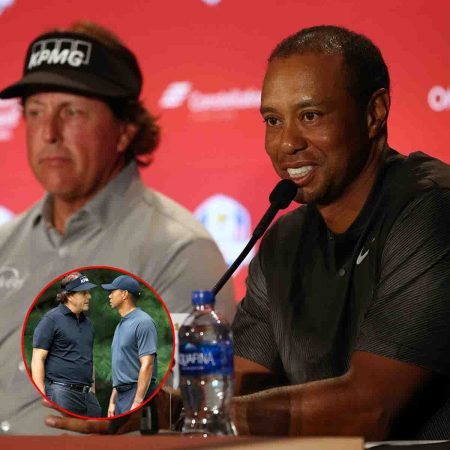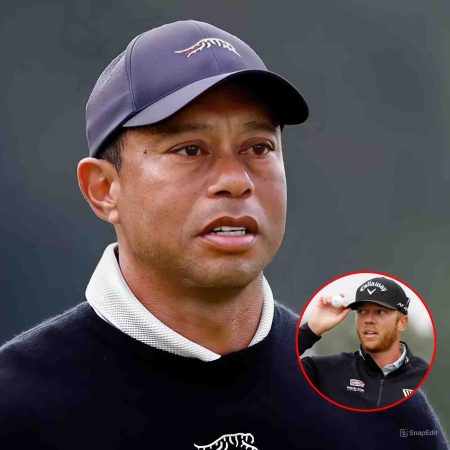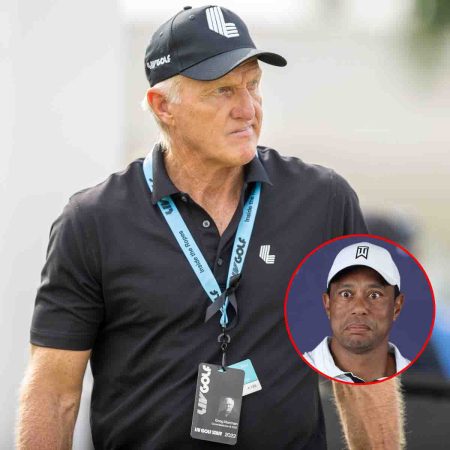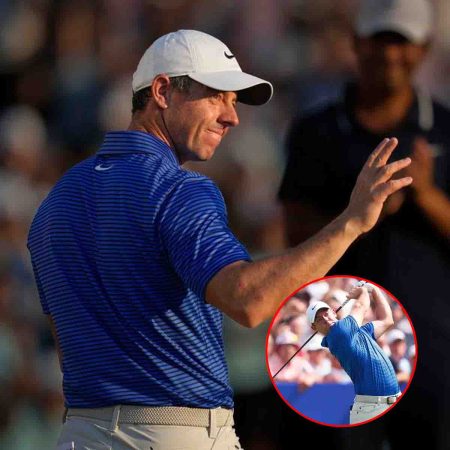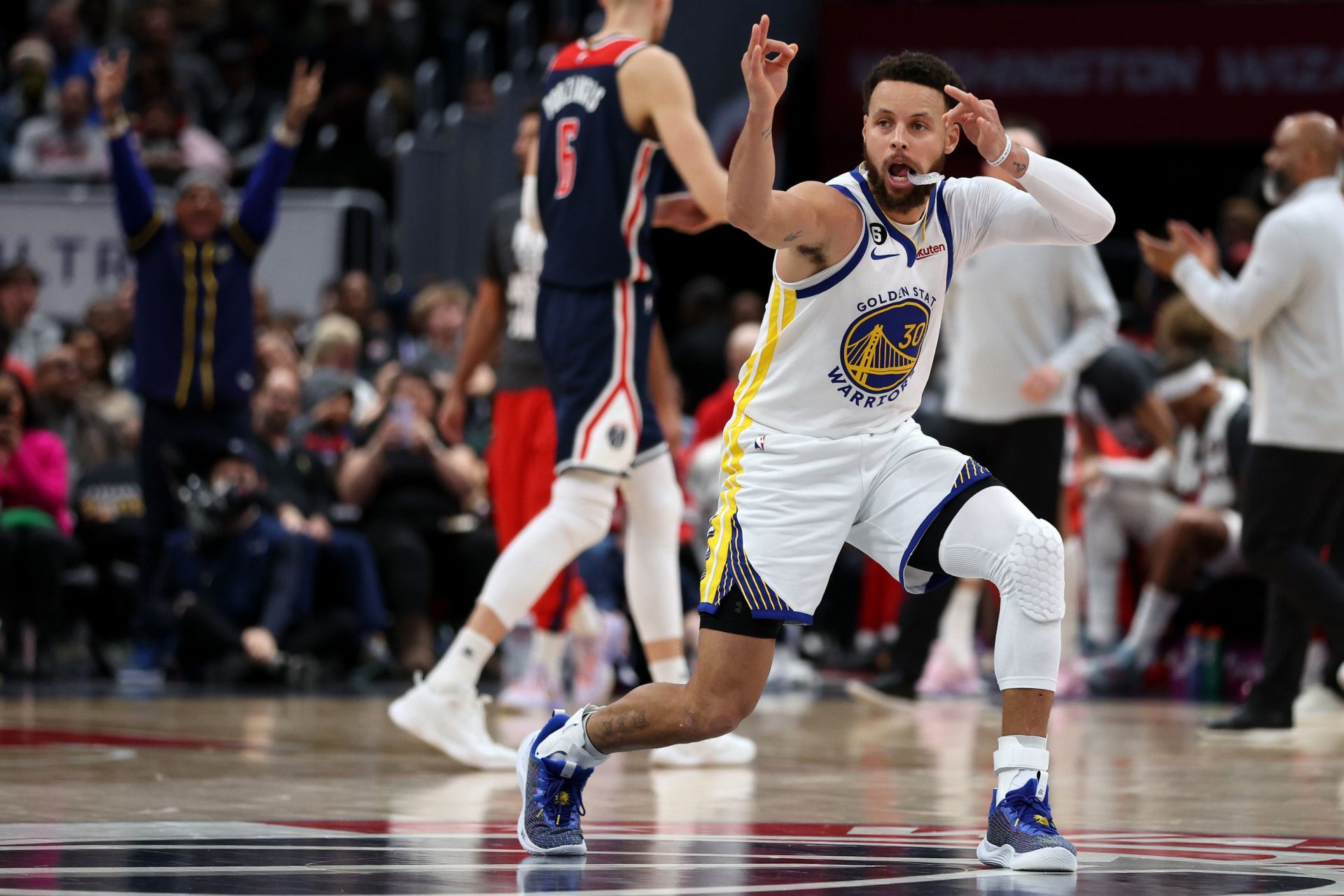
The Golden State Warriors appeared to be in danger of being burnt by another pick-and-pop threat the night after Nikola Vucevic, a true pick-and-pop threat who also has the touch inside to exploit mismatches and smaller frontcourt defenders, roasted them.
The Washington Wizards’ Kristaps Porzingis may be shooting 34.4% (1.3% below league average) on 5.4 attempts from beyond the arc this season — but leave him open enough and he will punish teams who can’t appropriately deal with him popping out after setting a ball screen.
Which was exactly the Warriors’ problem against him in the first half. Through a combination of personnel shortcomings and botched coverages, Porzingis dropped 25 points in the first half, including two threes.
One of those threes perfectly illustrated why Kevon Looney — an otherwise solid pick-and-roll defender — could not afford to play drop coverage against Porzingis:
You can see the problem when Looney has to engage the ball handler when in drop coverage. His limited footspeed doesn’t allow him to recover in timely fashion against popping ball-screeners — let alone against a popping big who is six-inches taller.
The correct coverage on these pick-and-pops must then involve some form of switching: either a direct switch at the point of the screen, or a “veerback” switch that involves the ball-handler’s defender veering back toward the popper when the ball is kicked out.
However, those are meticulous details that have to be hashed out and communicated in an effective manner. Otherwise, something like this happens:
Moses Moody chases Corey Kispert around the Wizards’ “Chicago” action (a pindown flowing into a DHO). Moody navigates the screens in an effort to stay attached to Kispert, but the kicker once again is Porzingis staying put beyond the arc instead of rolling to the rim against Looney’s drop.
The appropriate play would’ve been for Moody to veer back and switch toward Porzingis. However, Moody stays on Kispert a beat too long, forcing Donte DiVincenzo to have to come from the corner to take Porzingis. The result: two defenders go to the ball (a defensive no-no) and a swing to the corner by Porzingis nets the Wizards an open corner three.
Realizing that Looney may be too disadvantaged in drop against Porzingis, the Warriors elected to play a more mobile center in Draymond Green to account for the pick-and-pops. Green can recover and close space faster due to his quicker feet; he also has the length and wingspan to bother shots despite being 10 inches shorter than Porzingis.
Porzingis scored only seven points in the second half on 2-of-5 shooting. The Warriors keyed in on his popping tendencies by directly switching ball-screen actions and being content with him attacking mismatches by trying to mash his way toward the paint — something he has been historically uncomfortable with doing.
Meanwhile, the Warriors found pockets of success against Porzingis on the other end by directly involving him in screening actions. Their staple “Thumb Out” set in which an angle ball-screen is followed by “Get” action (a pitch to a teammate on the other side followed by a handoff) is quick hitting and effective in forcing Porzingis to directly engage Jordan Poole, who hits a smooth mid-range jumper against Porzingis’ drop:
A bit of screen-the-screener ingenuity also threw Porzingis around for a loop:
Anthony Lamb (being guarded by Porzingis) sets an off-ball screen for Green (guarded by Kyle Kuzma). Kuzma switches while Porzingis is late to realize the coverage. He scrambles desperately to contest Curry around the “Get” action.
Curry may have missed the shot, but Porzingis being drawn out toward the perimeter and away from the rim allowed Green to haul in the offensive board, leading to a huge Poole three.
The Warriors also brought Porzingis directly into ball-screen action to force him to defend in space:
This forced the Wizards’ hand; they stashed Porzingis onto Andrew Wiggins to prevent him from being directly involved, while also allowing him to be a roamer and helper on defense.
Suffice to say, Porzingis was a non-presence as a roamer. The Warriors proceeded to put pressure on the other Wizards on the floor through a couple of guard-guard screening actions centered around Curry and Poole, forcing the Wizards to make quickfire decisions.
If wrong decisions were made, the Warriors made sure to punish them:
To add insult to injury, Green — incited by a trash-talking fan who apparently questioned his Hall-of-Fame status — stole a telegraphed inbounds pass to Porzingis and created points off of a turnover that sealed the deal:
A Curry breakthrough in form (41 points on 28 shots, 6-of-15 on threes, 61.6 TS%), Poole providing much-needed scoring support (32 points on 20 shots, 7-of-13 on threes, 78.3 TS%) in the absence of Klay Thompson, and Green (17 points, six rebounds, 10 assists) making plays on both ends of the floor like a man possessed all contributed to a night that did not seem to be going the Warriors’ way.
But in was in the minute details — pick-and-roll coverages, personnel shifts, and other tactical adjustments — where the Warriors were able to provide pathways for their brightest stars to shine.
Source: https://www.goldenstateofmind.com




